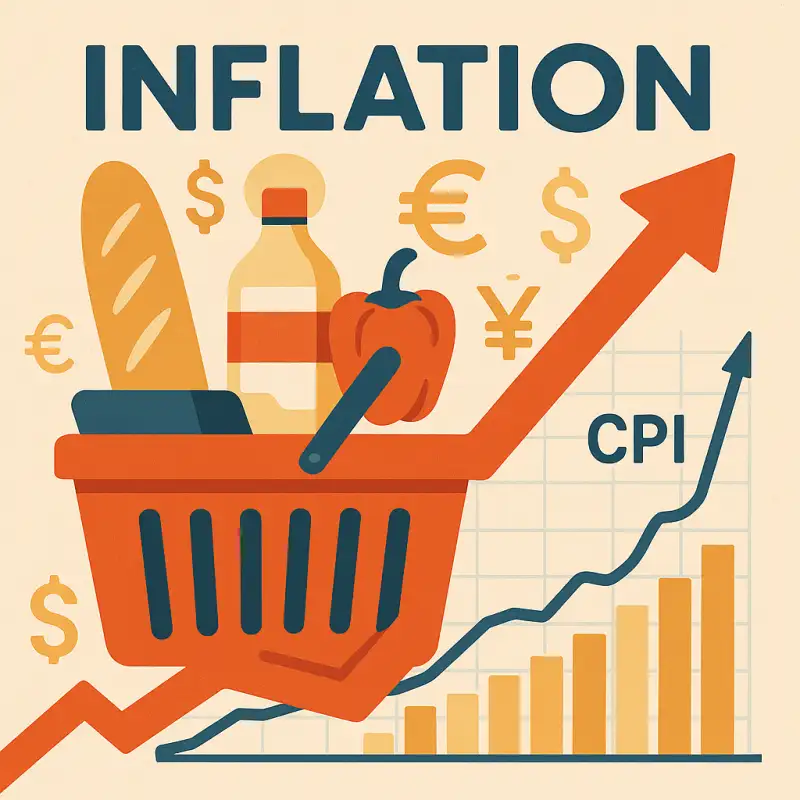
How to Calculate Inflation
Inflation is a crucial economic concept that affects everyone—from individuals managing household budgets to policymakers shaping national economies. Understanding how to calculate inflation empowers you to make informed financial decisions, plan for the future, and interpret economic news with confidence.
This guide will walk you through:
- The process of calculating inflation
- Core formulas used
- Real-world examples to illustrate each step
What is Inflation?
Inflation is the rate at which the general level of prices for goods and services rises, leading to a decrease in the purchasing power of money. It is usually measured monthly or annually.
Why Measure Inflation?
- Consumers: Understand changes in the cost of living
- Businesses: Adjust pricing, wages, and investments
- Governments: Set monetary policy, interest rates, and social benefits
Key Methods to Calculate Inflation
- Consumer Price Index (CPI)
- Producer Price Index (PPI)
- GDP Deflator
Note: CPI is the most widely used method for consumer and general economic analysis.
What is the Consumer Price Index (CPI)
CPI measures the average change over time in prices paid by consumers for a fixed basket of goods and services, such as:
- Food
- Housing
- Transportation
- Healthcare
- Entertainment
Each item is assigned a weight based on household spending patterns.
How is the CPI Calculated?
- Selection of Basket: Identify representative goods and services
- Price Collection: Gather prices for each item in the base and current year
- Weight Assignment: Based on their spending importance
- Calculation: Compute the weighted average of price changes
Inflation Rate Formula
General Formula (using CPI):
Inflation Rate = ((CPI in Current Year - CPI in Base Year) / CPI in Base Year) × 100
For a Single Good or Service:
Inflation Rate = ((Price in Current Year - Price in Base Year) / Price in Base Year) × 100
Step-by-Step Guide: Calculating Inflation Using CPI
Step 1: Gather Data
Get the cost of a fixed basket of goods for two periods (base and current year).
Step 2: Calculate CPI
CPI = (Cost of Basket in Given Year / Cost of Basket in Base Year) × 100
Step 3: Calculate Inflation Rate
Inflation Rate = ((CPI_Current - CPI_Base) / CPI_Base) × 100
Real-World Example: Calculating CPI Inflation
Basket Contents: Books and Childcare
| Item | Price in 2016 | Price in 2017 | Weight |
|---|---|---|---|
| Books | $20 | $20.50 | 50% |
| Childcare | $30 | $31.41 | 50% |
Step 1: Price Changes
- Books:
((20.50 - 20) / 20) × 100 = 2.5% - Childcare:
((31.41 - 30) / 30) × 100 = 4.7%
Step 2: Weighted Average
Weighted Inflation = (2.5% × 0.5) + (4.7% × 0.5) = 3.6%
Overall Inflation: 3.6%
Example: Single Good Inflation
Milk Price:
- 1996: $2.55
- 2023: $4.20
Inflation Rate = ((4.20 - 2.55) / 2.55) × 100 = 64.7%
Inflation in India: Practical Example
- Base Year (2010) Basket Cost: ₹775
- Current Year (2024) Basket Cost: ₹1050
Step 1: CPI Calculation
- CPI 2010:
(775 / 775) × 100 = 100 - CPI 2024:
(1050 / 775) × 100 = 135.48
Step 2: Inflation Rate
Inflation Rate = ((135.48 - 100) / 100) × 100 = 35.48%
Price Increase: 35.48% from 2010 to 2024
Compound Inflation: Exponential Growth
Future Price = Present Price × (1 + r)^n
Where:
r= annual inflation rate (decimal)n= number of years
Example:
- Present Price: $100
- Inflation Rate: 10%
- Years: 5
Future Price = 100 × (1 + 0.10)^5 = 100 × 1.61051 = $161.05
Alternative Method: GDP Deflator
Used for economy-wide inflation.
GDP Deflator = (Nominal GDP / Real GDP) × 100
Summary Table: Inflation Calculation Methods
| Method | Formula | Best For |
|---|---|---|
| CPI | ((CPI_Current - CPI_Base) / CPI_Base) × 100 | Consumer goods & services |
| Single Good | ((Price_Current - Price_Base) / Price_Base) × 100 | Specific items |
| Compound | Future Price = Present Price × (1 + r)^n | Long-term projections |
| GDP Deflator | (Nominal GDP / Real GDP) × 100 | Economy-wide inflation |
Why Does Inflation Matter?
- Erodes purchasing power
- Affects savings & investments
- Impacts wages and contracts
- Guides government and central bank policy
Tips for Tracking and Managing Inflation
- Use official government data (CPI reports)
- Leverage online inflation calculators
- Adjust savings/investment strategies
- Monitor macroeconomic trends
Conclusion
Calculating inflation is straightforward when you understand the formulas and logic behind them. Whether you're using CPI, GDP Deflator, or tracking a specific item's price, the goal is to compare changes over time and express them as a percentage.
Key Takeaway: To calculate inflation, determine the change in price or index, divide by the original value, and multiply by 100. This reveals how your money’s value evolves and helps in smarter financial planning.



